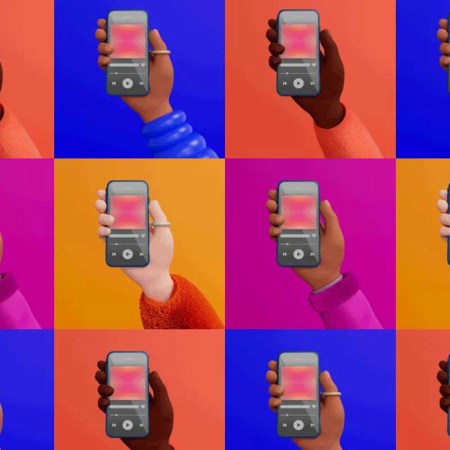Way back in ‘92, Bruce Springsteen riddled his television set with a .44 magnum in the music video for “57 Channels (And Nothin’ On).”
In the song, The Boss complains of losing his girl to bad TV (or maaaybe because it was his worst album). Had he had Netflix, Amazon, Hulu et al. — and the autonomy that comes with them — maybe things would’ve worked out differently.
TV as we know it is going to go away soon. Just last week, it was reported that ESPN — by most measures the most lucrative property in the industry — has hemorrhaged 1.5 million subscribers since February. And Reed Hastings, founder and CEO of Netflix, recently said “We will come to see that linear TV declines every year for the next 20 years.”
Or sooner. Let’s take a look at what to expect.
How is traditional television adapting to the new landscape?
A recent UBS survey revealed that cable television viewing hasn’t declined that much (yet), but the trends are disconcerting for networks. According to data, the new millennial market shows viewing preference for digital content: nearly 1/3 of their serial viewing comes from digital platforms.
Each network’s parent company derives revenue from multiple conduits, e.g., ABC’s Disney profits come from both cable programming, movies, theme parks and a grip of other entities. Broadcast television is still the most profitable income source, but the network heads in their ivory towers are competing with a renaissance in viewing habits thanks to the growth of on-demand content: a lack of scheduled programming, “stacked” episodes (binge-watching), a growing catalogue of legacy content, quality original programming devoid of advertising and institutional boundaries and the option to view 4K widescreen on smaller devices without letterboxing.
Oh, plus it’s cheaper than bundled cable.
Networks are handling the pressure by adding more original hours, increasing production costs for new programs, favoring in-house production (greater risk but greater gain in profits), producing more dramatic hour-long series and even teaming with streaming production companies to produce original shows, such as the ABC-produced Netflix original Daredevil. If a show syndicated on Netflix is a hit, big dividends are in order for the network. (The cautionary tale here is Friends, which aired on NBC, but the network goofed on a big paycheck when Warner Bros and Bright/Kauffman/Crane Productions licensed to Netflix for a mere $118 million.)
With the renewed influx of content from the traditional powers (i.e., the networks), what are streaming services doing to compete?
Netflix, Amazon and Hulu aren’t the only streaming services competing with each other anymore. HBO, Sony, Apple and Dish Network are all producing on-demand content now as well. Each of these properties separates itself by streaming varied content you can’t find elsewhere: Sony’s Playstation Vue web-TV service offers various bundled channel packages; HBO Now streams HBO series; Dish Network’s Sling TV provides live-TV options.
These new players are forcing the big three to invest more in exclusive content. One thing the OG streaming services have understood from the outset is that quality story concepts are a great growth model, which is why a cavalcade of Hollywood A-listers are experimenting there. Hence, each platform has its own slate of original programming and star appeal (that botched Adam Sandler-Netflix wedding notwithstanding).
But streaming services also have nuanced competitive strategies. Both Netflix and Amazon have masses of data on customer behavior. Netflix commissions new programming based on viewer demographics, the most popular genres and actors, viewing habits like duration and frequency, and a host other metrics. (It’s likely that Amazon employs a similar system, given its years of business in observing buyer behaviors.)
With regard to new original programming, Amazon relies on a democratic model that empowers users: they produce a number of pilots that are free to view and gather audience opinion before determining whether to greenlight a whole season.
Hulu, meanwhile, intends to stream live television, which will debut in the first quarter of 2017. Hollywood is also turning to Hulu because its distribution stipulations are less restrictive than Netflix. Amazon also doesn’t require new movies to stream on the day of release (Netflix does), allowing movies to have box office receipts prior to distribution. These concessions, though, are largely dictated by the fact that Hulu and Amazon’s acquisition content currently trails that of Netflix by a longshot.
What’s next?
It seems that streaming video has just about killed the DVD star as profits tumble while investment in digital platforms spikes. Reed Hastings of Netflix also predicts the rise of 4K ultra HD video in live television streaming such as sports. He believes each league will eventually host content with a proprietary app.
What does that mean for your television sets? It will likely be a giant screen dotted with content apps, not different from what Apple TV has been doing for nearly a decade.
It may seem like a slow decline for the big networks’ empire, but they will evolve in their own right (likely in app form), likely cannibalizing much of the competition as they go (as has already happened with Hulu). They have too much many and too many smart people on the payroll to be smited entirely.
This article was featured in the InsideHook newsletter. Sign up now.





















